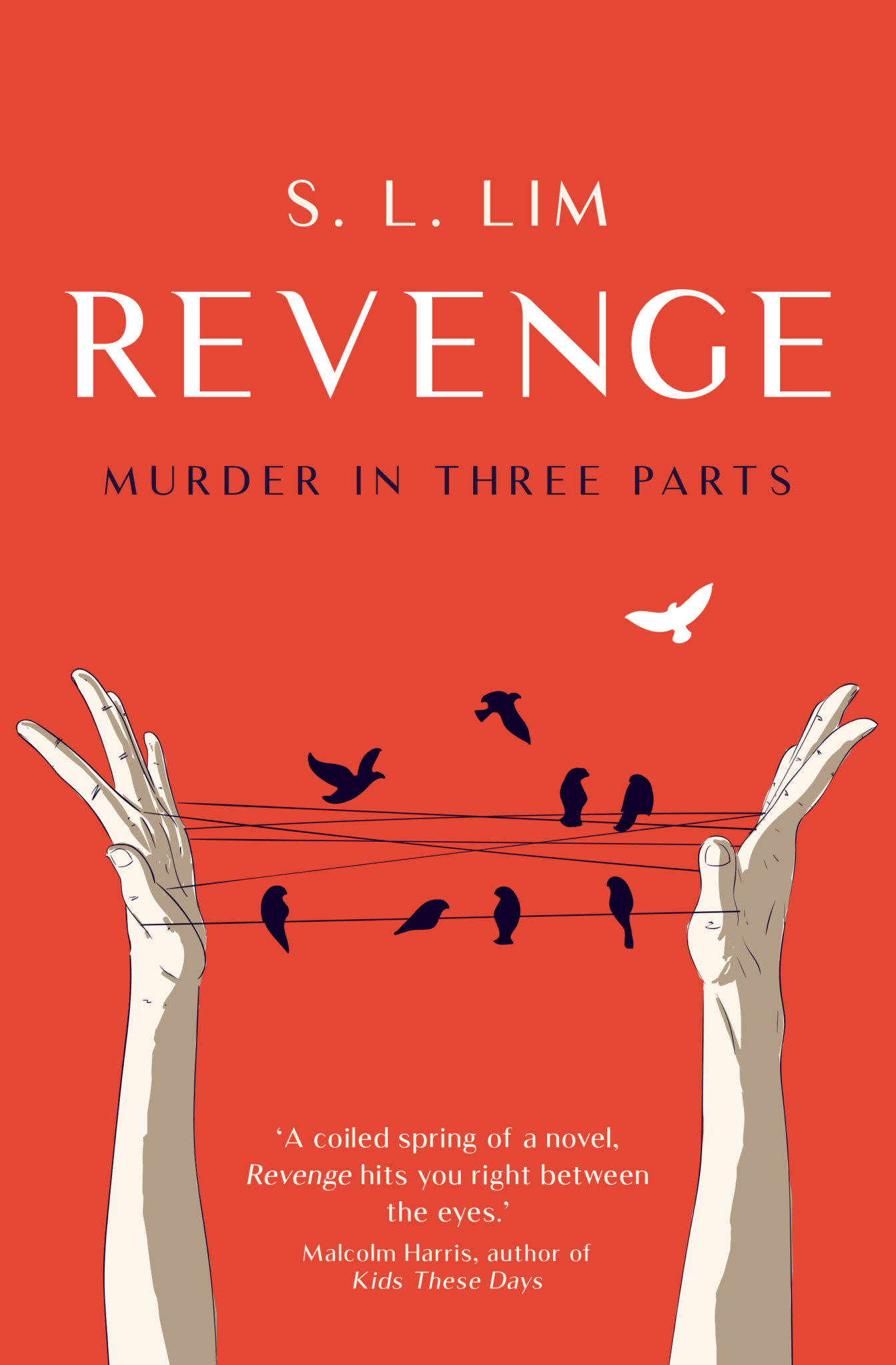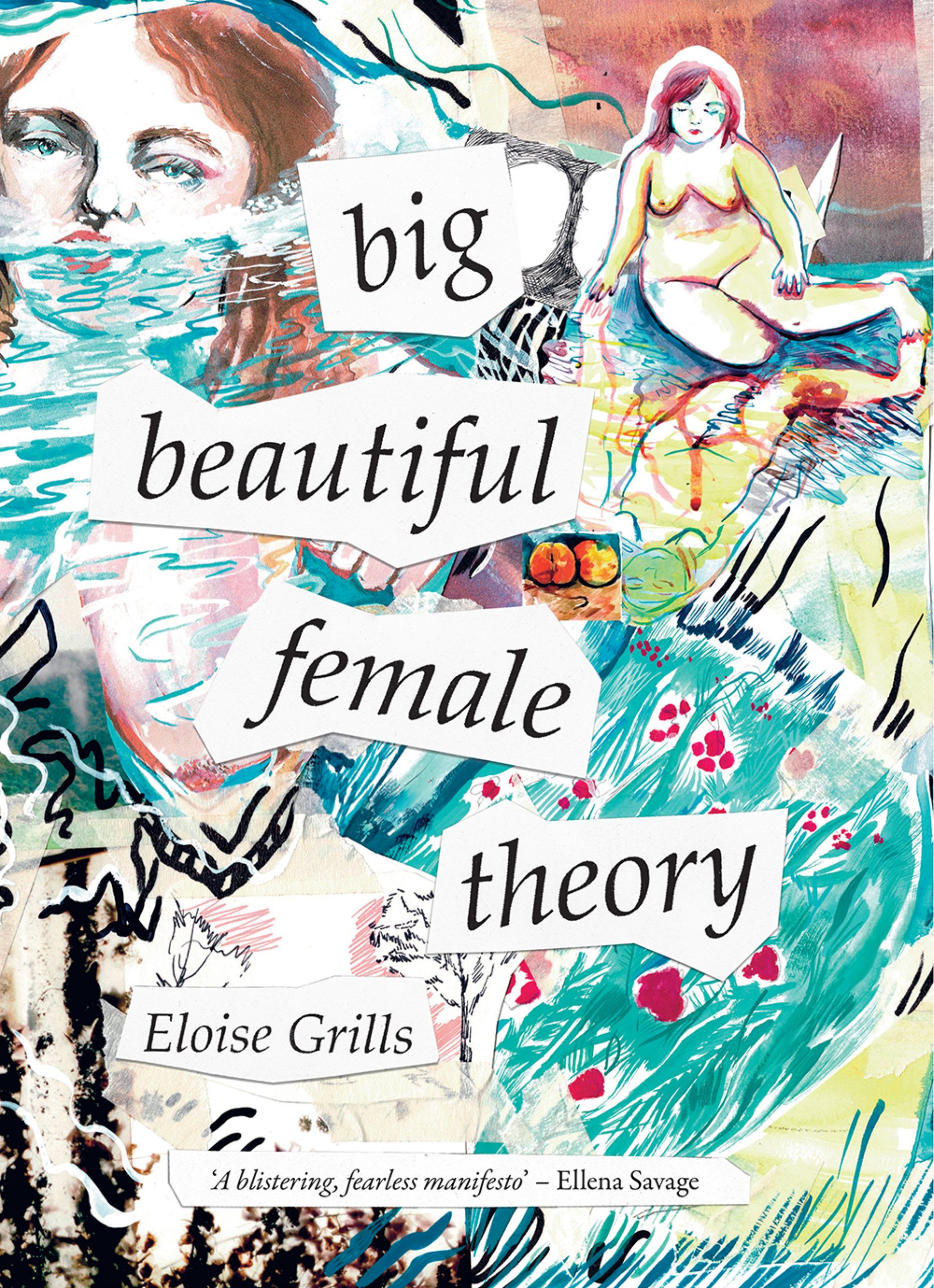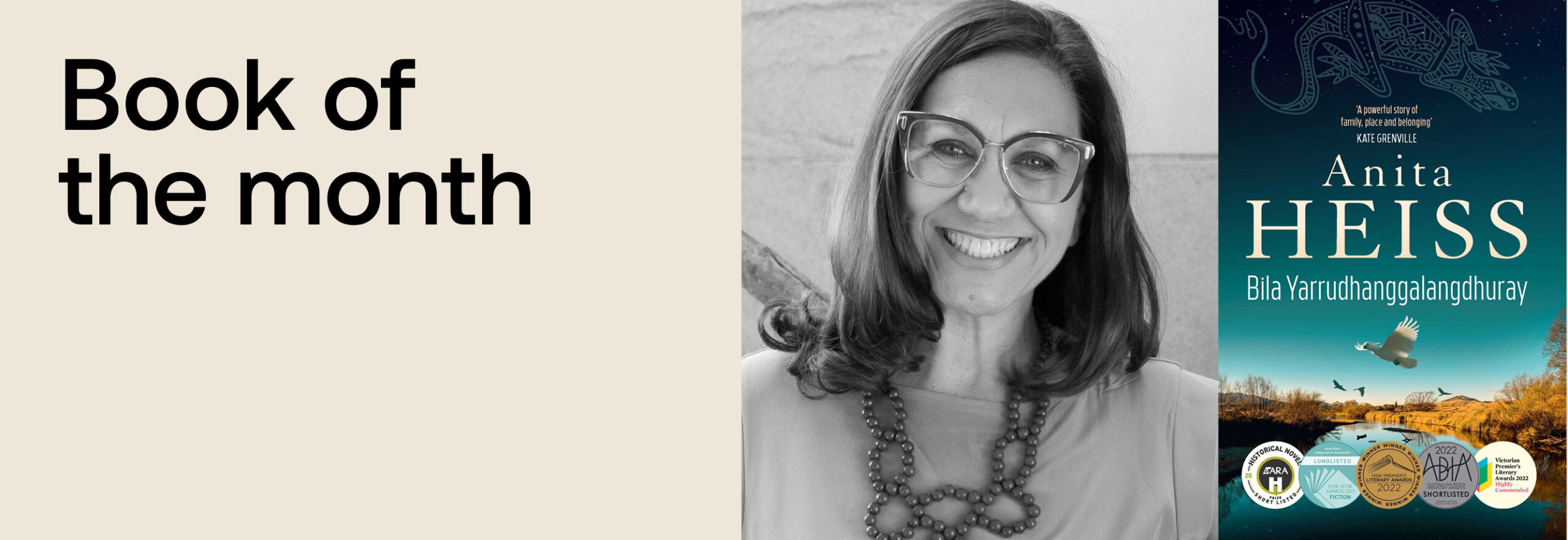
This month Stella celebrates Bila Yarrudhanggalangdhuray by Anita Heiss, longlisted for the 2022 Stella Prize. We asked Anita about her career, the Stella Prize and adapting her work as publisher.
Bila Yarrundhanggalandhuray was, to our understanding, the first time a commercial novel had a title in Aboriginal language on the cover. Reflecting on this and the use of languages in the book, do you think Bila Yarrunbdhanggalandhuray has helped propel change in our understanding and use of Aboriginal languages?
Yes, we believe that to be correct in terms of only having an Aboriginal language on the cover.
When the publisher suggested they wanted to push the boundaries with the cover, my immediate response was, “Let’s remove the English altogether”. And so, we did. The English translation of the title – River of Dreams – sits on the back cover.
My purpose in using Wiradyuri language on the cover and within the story was three-fold:
First, I wanted to acknowledge with yindyamarra all I had learned in my Wiradyuri language course under the guidance, wisdom and generosity of Uncle Stan Grant Snr, and my teachers Yarri Lambshead, Letetia Harris, Lloyd Dolan and Aunty Elaine Lomas.
Second, I wanted to make a personal contribution to the maintenance of the Wiradyuri language through my writing, especially in this, the United Nations Decade of International Indigenous Languages.
Third, I wanted the use of language in Bila Yarrudhanggalangdhuray to remind readers that everywhere you walk in Australia you walk on country that has a first language, and it is not English.
I’ve met many readers who listened to the audio by the incredibly talented Tamala Shelton, and simultaneously read along with the physical text so they could appreciate the language better. So yes, I’m happy to say that I think my novel has helped propel change in understanding the importance and role of first languages.
I also need to say that I always felt my vocab as an author was lacking. With writing Bila Yarrudhanggalangdhuray what I realised is that it was the Wiradyuri vocab I was missing. It makes more sense to me now to write about my country in the language that comes from that land, language that can better describe the people, the spirit, the world.
What was your research process for this book and why did you choose to write it as fiction instead of non-fiction?
The research for the novel was extensive. It included the intensive two-year Graduate Certificate in Wiradjuri Language, Culture and Heritage at Charles Sturt University in Wagga Wagga (where much of the story is set post-flood), as well as trips to Gundagai where I accessed resources at the local library (huge thanks for all the support by library staff led by Cindy).
I visited the Historical Museum of Gundagai (where the Horsley Family presented a sundial to the people of Gundagai to honour Yarri). I took in the murals of Yarri and Jacky Jacky by Arnold St Clair in the Criterion Hotel, Gundagai.
I visited the monument to Yarri in North Gundagai Cemetery, crossed Yarri Bridge many times, and stood atop Mount Parnassus also to imagine what Gundagai town might have been like. I also rowed with others down the Marramabidya Bila to trying to get into character – that of the heroes but also those fearing for their lives during the flood. I had the benefit of having the knowledge and advice of the Manager Social & Community at Gundagai Council Miriam Crane who offered valuable counsel on the story of Gundagai, and this work as historical fiction generally.
The extraordinary work of Peter Smith (Chair) and the entire Yarri and Jacky Jacky Sculpture Committee in brining national attention to the heroes, the erection of the statue on Sheridan Street all contributed to my research, and for that I remain immensely grateful.
I chose to write the story as historical fiction because I wanted to reach the general reading audience about a national story that all Australians should know. Commercial fiction/historical fiction does that. It can provide a story that speaks to the national conscience, can be a learning exercise and an escape, while at times also being entertaining. And, as the Stella longlisting also proved, historical fiction can also be considered important, skilled literature.
I wanted the use of language in Bila Yarrudhanggalangdhuray to remind readers that everywhere you walk in Australia you walk on country that has a first language, and it is not English.
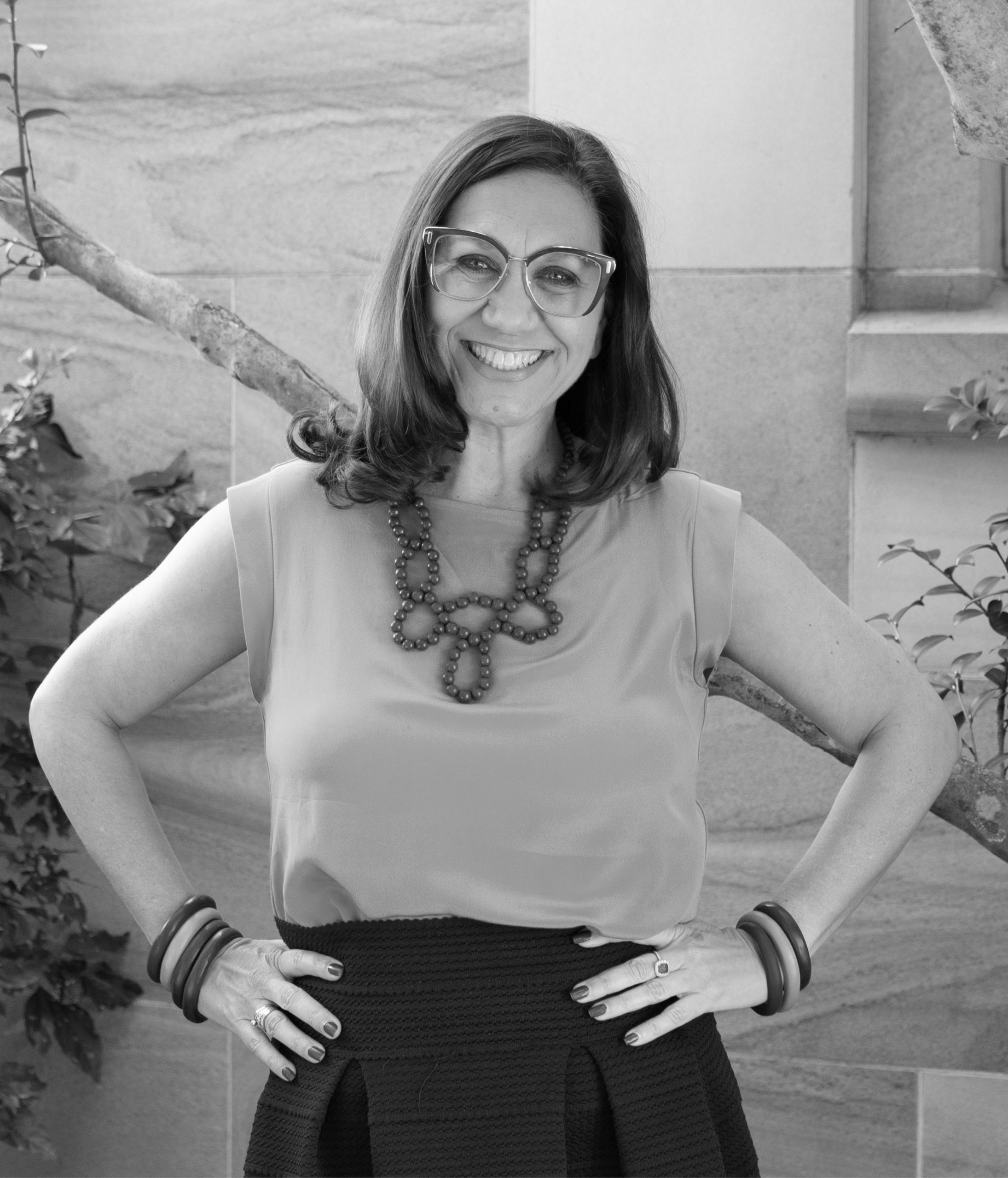
Dr Anita Heiss
The book was longlisted for the Stella Prize in 2022. Do you remember what you were doing when you received the news?
Absolutely yes! I was at my desk at the University of Queensland and remember being overwhelmed with emotion. I write to be read, not for awards, so the longlisting was not only unexpected but it filled me with pride, that my work was considered worthy among so many stunning Australian writers.
In March 2023, Simon & Schuster announced you as the publisher at large of new imprint Bundyi. Congratulations! What type of books from First Nations creators are you looking for?
Thank you! It was an incredibly exciting moment for all of us. The Bundyi imprint will specifically publish non-fiction (memoir, autobiography, biography, essays) and commercial fiction: Romance/chick lit, historical fiction, contemporary fiction.
The first title, Murriyang: Song of Time by Stan Grant will be released in December. The second title, an historical novel by Tasma Walton, will be released in April 2025. And Larissa Behrendt’s re-imagining of Pride and Prejudice will be released in late 2026. I don’t take unsolicited manuscripts, but I will be taking pitches at this year’s Romance Writers Conference in Adelaide, looking for the next deadly rom com by a First Nations author.
About the Author

Dr Anita Heiss is an internationally published, award-winning author of 23 books; non-fiction, historical fiction, commercial women’s fiction and children’s novels. She is a proud member of the Wiradyuri Nation of central New South Wales, an Ambassador for the Indigenous Literacy Foundation and the GO Foundation and Professor of Communications at the University of Queensland. Anita is also the Publisher at Large of Bundyi, an imprint of Simon & Schuster cultivating First Nations talent, and a board member of the National Justice Project and Circa Contemporary Circus. As an artist in residence at La Boite Theatre, she adapted her novel Tiddas for the stage. It premiered at the 2022 Brisbane Festival and was produced by Belvoir St for the Sydney Festival in 2024.
Her novel, Bila Yarrudhanggalangdhuray, about the Great Flood of Gundagai, won the 2022 NSW Premier’s Indigenous Writers’ Prize and was shortlisted for the 2021 ARA Historical Novel Prize and the 2022 ABIA Awards. Anita’s first children’s picture book is Bidhi Galing (Big Rain), also about the Great Flood of Gundagai. Anita enjoys running, eating chocolate and being a creative disruptor.
About the Book
Bila Yarrudhanggalangdhuray is a love story, a celebration and honouring of language. It is a story, Beejay Silcox writes, “embroidered from a true tale of extraordinary heroism.” It is an epic historical novel. Inspired by the true story of two Wiradyuri men, Yarri and Jacky Jacky, heroes of the flood of 1852, saving up to 80 lives. It is a love story too, of Wagadhaany, a survivor. When Wagadhaany meets Wiradyuri stockman Yindyamarra, her heart slowly begins to heal. But still, she dreams of a better life, away from the degradation of being owned. She longs to set out along the river of her ancestors, in search of lost family and country. Can she find the courage to defy the White man’s law? And if she does, will it bring hope … or heartache?
Judges Report
Gundagai, 1852
The powerful Murrumbidgee River surges through town leaving death and destruction in its wake. It is a stark reminder that while the river can give life, it can just as easily take it away.
Wagadhaany is one of the lucky ones. She survives. But is her life now better than the fate she escaped? Forced to move away from her miyagan, she walks through each day with no trace of dance in her step, her broken heart forever calling her back home to Gundagai.
Set on timeless Wiradyuri country, where the life-giving waters of the rivers can make or break dreams, and based on devastating true events, Bila Yarrudhanggalangdhuray (River of Dreams) is an epic story of love, loss and belonging.
Bila Yarrudhanggalangdhuray is inspired by the true story of Wiradyuri men – Yarri and Jacky Jacky – who saved the lives of sixty people during a flood that took place in 1852. It places the remarkable fictionalised story of Wagadhaany at the centre, allowing her sensitivity, grit, and strength to shine through on every page.
Anita Heiss’s novel is written for all ages, and has a timeless quality, and yet it grapples with complex material, presenting an extraordinary portrait of what it means when a white woman’s desire to be seen as ‘good’ outstrips her loyalty to her Black friend. Heiss explores the contours of good intentions without bitterness or rancour. With a keen eye for detail, Heiss writes with poignancy and tenderness about Wagadhaany’s love affair and her journey to motherhood. In charting Wagadhaany’s struggles to keep her family together, and return to her home in Gundagai, Heiss has created a new national heroine.
Bila Yarrudhanggalangdhuray belongs in the library of all Australians, no matter their age. Heiss has chronicled the story of one woman’s fight to maintain her dignity in a dramatically changing world. In so doing, Heiss has written a story for her people certainly, but she has also written a story for the nation.
Further Reading
“There are books you encounter as an adult that you wish you could press into the hands of your younger self. Bila Yarrudhanggalangdhuray is one of those books…” – Beejay Silcox, The Guardian
“Celebrating family, love, and connection to the land, Bila Yarrudhanggalangdhuray is a profoundly moving showcase of Heiss’ skill for crafting stories and relationships.” – Jodie Sloan, The AU Review
“We need more of these stories; more novels that reflect Australia’s colonial past through the eyes of First Nations women.” – Chris Gordon, Readings online
Listen to Anita Heiss discuss Bila Yarrudhanggalangdhuray on ABC Radio’s Afternoons with Jacinta Parsons
Watch ‘Aboriginal writing: literature as a political tool’ via Allen & Unwin
Listen to Anita Heiss discuss Bila Yarrudhanggalangdhuray with Paul Barclay at Melbourne Writers Festival
Listen to Anita Heiss talk about the importance of making your own emotional and social wellbeing a priority on ABC Lifestyle
Explore the latest from stella
This month Stella celebrates Revenge: Murder in Three Parts, shortlisted for the 2021 Stella Prize. We sat down with S.L. Lim to …
This month Stella celebrates West Girls, longlisted for the 2024 Stella Prize. We sat down with Laura Elizabeth Woollett to chat all …
This month Stella celebrates big beautiful female theory, shortlisted for the 2023 Stella Prize. What book are you currently reading? And what …
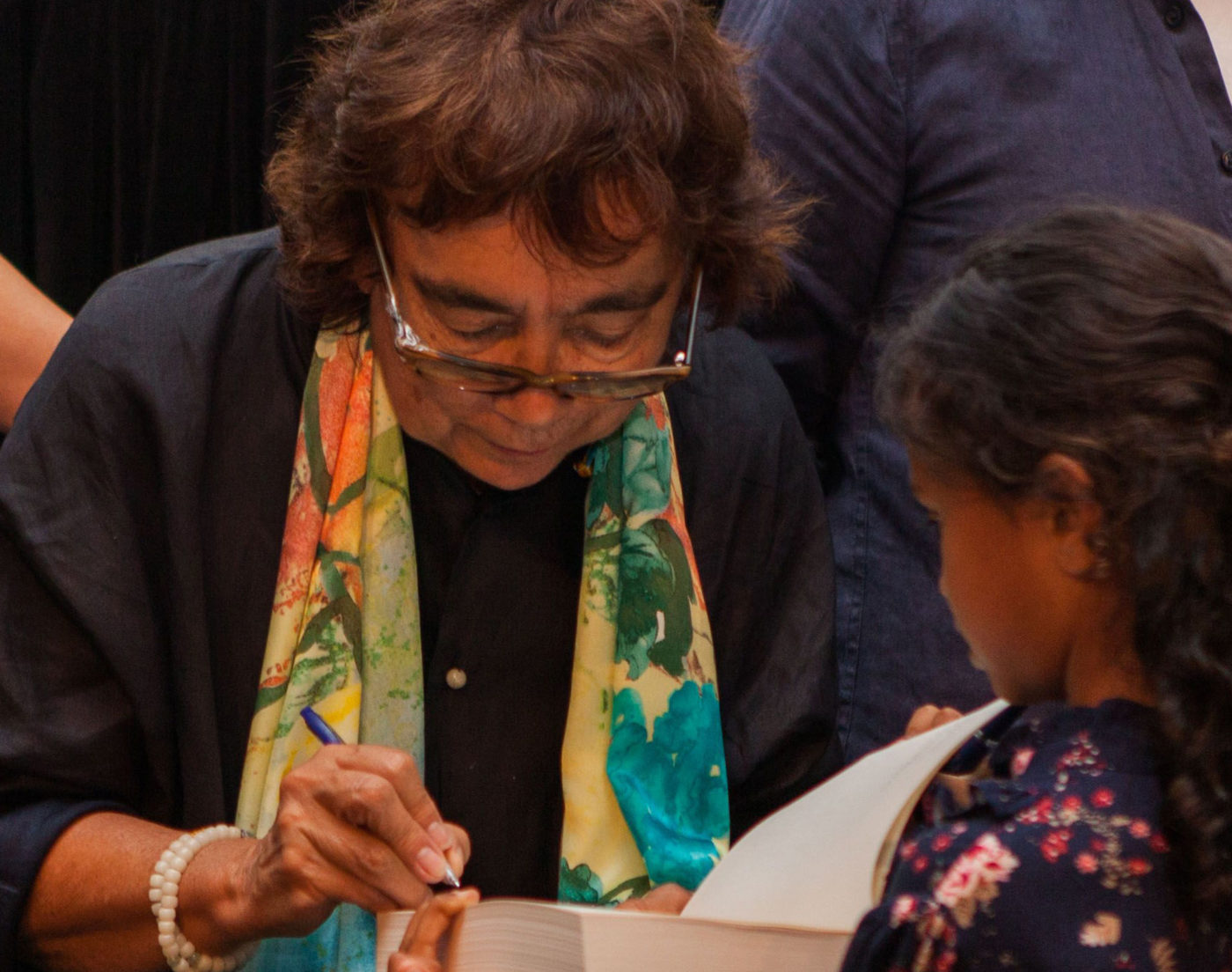
Help change the story
As a not-for-profit organisation with ambitious goals, Stella relies on the generous support of donors to help fund our work.
Every donation is important to us and allows Stella to continue its role as the leading voice for gender equality and cultural change in Australian literature.
Stella is a not-for-profit organisation with DGR status. All donations of $2 or more are tax-deductible.
SUBSCRIBE
Join our mailing list to stay up-to-date on Stella news, events and opportunities
Stella is grateful to the ongoing generosity of our supporters:

CONTACT STELLA
The Stella Prize Inc
info@stella.org.au
ARBN: 657 317 283
Stella acknowledges the Traditional Owners of the land throughout Australia and recognises their continuing connection to land, waters, community, and culture.
We pay our respect to Elders past and present and, through them, to all Aboriginal and Torres Strait Islander people.
Website design canyonbrand.com
